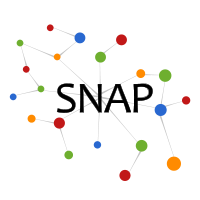SPMiner: Frequent Subgraph Mining by Walking in Order Embedding Space
SPMiner (Subgraph Pattern Miner) is a general tool for finding frequent subgraphs in a large target graph. SPMiner integrates graph neural networks (GNNs), order embedding space, and an efficient search strategy to identify network subgraph patterns that appear most frequently in a target graph dataset.
Motivation
Finding subgraph patterns or network motifs that frequently recur in a graph dataset is important for identifying interpretable structural properties of complex networks. Example applications include:
- Biology: subgraph counting is highly predictive for disease pathways, gene interaction and connectomes
- Social science: subgraph patterns have been observed to be indicators of social balance and status
- Chemistry: common substructures are essential for predicting molecular properties
However, frequent subgraph mining has extremely high computational complexity. A traditional approach to motif mining is to enumerate all possible motifs Q of size up to k, usually up to 5, and then count appearances of Q in a given dataset. Frequent subgraph counting is very computationally challenging because it requires solving two intractable search problems:
- (1) Counting the frequency of a given motif Q in G.
- (2) Searching over all possible motifs Q to identify the frequent ones.
SPMiner is the first neural approach to approximately identify the most frequent subgraphs, outperforming existing heuristics and search-based approximation algorithms.
Method

SP-Miner is a general framework using graph representation learning for identifying frequent motifs in a large target graph. It consists of two steps: an encoder for embedding subgraphs and a motif search procedure.
Encoder is an expressive graph neural network (GNN) with trainable dense skip layers. We decompose the input graph into overlapping node-anchored neighborhoods around each node. The encoder then maps these neighborhoods to points in an order embedding space. The order embedding space is trained to enforce the property that if one graph is a subgraph of another, then they are embedded to the "lower left" of each other (See part (a) for the figure above). Hence the order embedding space captures the partial ordering of graphs under the subgraph relation.
Motif Search Procedure SPMiner then reasons in the embedding space to identify frequent motifs of desired size k. SPMiner searches for a k-step walk in the embedding space that stays to the lower left of as many neighborhoods (blue dots) as possible (See part (b) of the figure above). The walk is performed by iteratively adding nodes and edges to the current motif candidate, and tracking its embedding. The number of subgraphs to the top right in the embedding space gives the frequency of the motif. Three different search procedures are explored:
- Greedy search
- Beam search
- Monte Carlo Tree Search
Experiments


Code
A reference implementation of SPMiner is available on Github (https://github.com/snap-stanford/neural-subgraph-learning-GNN). The Repository Subgraph Learning is a general library to perform subgraph matching, and subgraph mining tasks, and can be extended to perform multiple tasks related to subgraph predictions (e.g. counting subgraphs).Datasets
The ENZYMES and COX2 datasets can be downloaded from TU Dortmund. The road network dataset can be downloaded from NetworkRepository.Contributors
The following people contributed to SPMiner:
Rex Ying
Andrew Z. Wang
Jiaxuan You
Jure Leskovec
References
Frequent Subgraph Mining by Walking in Order Embedding Space. R. Ying*, A. Wang*, J. You, J. Leskovec, 2020.



